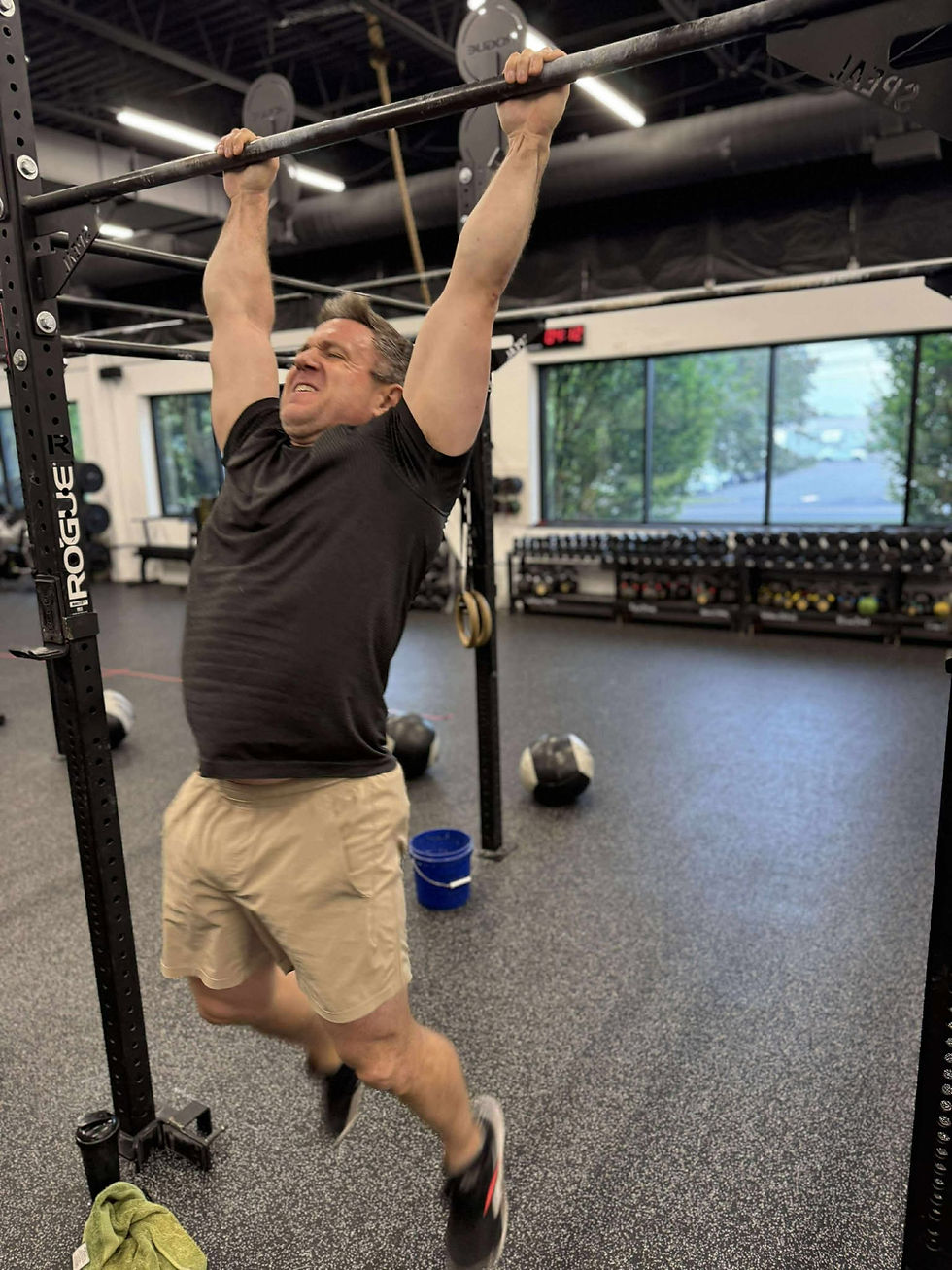The Optimal Hydration Strategy for CrossFit Success and Overall Health
- CF201
- Jun 3
- 3 min read
Updated: Jul 11
Hydration is essential for everyone, but it's vital for those engaged in high-intensity workouts like CrossFit. When you're giving your all in each session, the right hydration strategy can take your performance to new heights. This post will break down how best to stay hydrated, whether you're a seasoned CrossFit athlete or someone looking to maintain overall health.
Why Hydration Matters
Water is fundamental for many bodily functions, including regulating temperature, transporting nutrients, and cushioning joints. In CrossFit, dehydration can be particularly detrimental. Research shows that losing as little as 2% of your body weight due to dehydration can reduce performance by about 10-20%. Symptoms of dehydration include:
Dizziness and lightheadedness
Increased heart rate
Decreased strength and endurance
For instance, consider an athlete weighing 200 pounds. A 2% loss equates to 4 pounds of water, which can severely impact their workout capacity. Staying hydrated helps maintain strength, endurance, and mental clarity, allowing you to push through those demanding WODs.
The Effects of Dehydration
Dehydration can range from mild to severe and may lead to serious health issues. Even mild dehydration can lead to noticeable performance declines. Symptoms to watch for include:
Poor concentration and focus
Slower reaction time
Greater feelings of fatigue
These symptoms can compromise your workout and increase the risk of injury. Athletes should learn to recognize these early signs to safeguard their training.
How Much Water Should You Drink?
The average adult should aim for at least 8 cups (64 ounces) of water a day. However, athletes may need much more. A practical guideline is to drink half your body weight in ounces. For example, if you weigh 150 pounds, aim for 75 ounces of water daily.
Additionally, during intense CrossFit sessions, it’s typically recommended to consume an extra 16-24 ounces of water for every hour you work out. This may not just benefit your workout but also support recovery post-exercise.
Factors Affecting Hydration Needs
Your hydration needs can vary based on several factors:
Body Weight: Heavier individuals usually need more fluids to stay hydrated.
Exercise Intensity: Higher intensity workouts lead to greater fluid loss through sweat.
Climate: Hot and humid conditions can increase sweat production, necessitating higher water intake.
Diet: Foods high in water content, like cucumbers and watermelon, can supplement your hydration. Conversely, processed, high-sodium foods can spur increased thirst.
Hydration Before, During, and After Workouts
A comprehensive hydration strategy incorporates fluid intake before, during, and after your workouts.
Before Your Workout
Aim to drink 16-20 ounces of water at least an hour prior to your CrossFit session. This preparation allows your body to absorb the fluids adequately, priming you for optimal performance.
During Your Workout
Consistent sipping during your workout is essential to replace lost fluids. If your session exceeds an hour, consider electrolyte drinks. An electrolyte drink containing sodium, potassium, and magnesium can restore your mineral balance, important when sweating heavily.
After Your Workout
Post-exercise hydration is just as crucial. Try to drink at least 16-24 ounces within 30 minutes of finishing your workout. This not only aids in recovery but also helps replenish lost fluids and electrolytes.

The Role of Electrolytes
Electrolytes, such as sodium, potassium, and magnesium, are vital for regulating hydration levels, especially during intense workouts. For workouts lasting over one hour or when you sweat heavily, replenishing electrolytes is essential. Opt for drinks that are low in added sugars and high in essential minerals to rehydrate effectively.
Signs of Adequate Hydration
Being adequately hydrated is crucial for overall health. Here are some signs that indicate your hydration levels are on point:
Clear Urine: A pale yellow hue typically indicates good hydration. Dark urine is a strong signal that you need to drink more.
Normal Energy Levels: Consistent energy throughout the day and during workouts suggests you're hydrating properly.
Regular Thirst: While thirst shouldn’t be your only hydration cue, if you are frequently thirsty, it is essential to increase your fluid intake.
Staying on Top of Your Game
Understanding how to hydrate effectively for optimal health and performance can transform your CrossFit journey. By watching your water intake and responding to your body’s signals, you can create a hydration strategy tailored to your needs.
Hydration is a daily commitment, not just something you think about before workouts. Stay aware of your fluid needs at all times to fully enjoy the benefits of your CrossFit training and support your overall health. Prioritizing hydration is a step toward not only achieving your fitness goals but also ensuring your well-being remains a priority. Cheers to staying hydrated!



